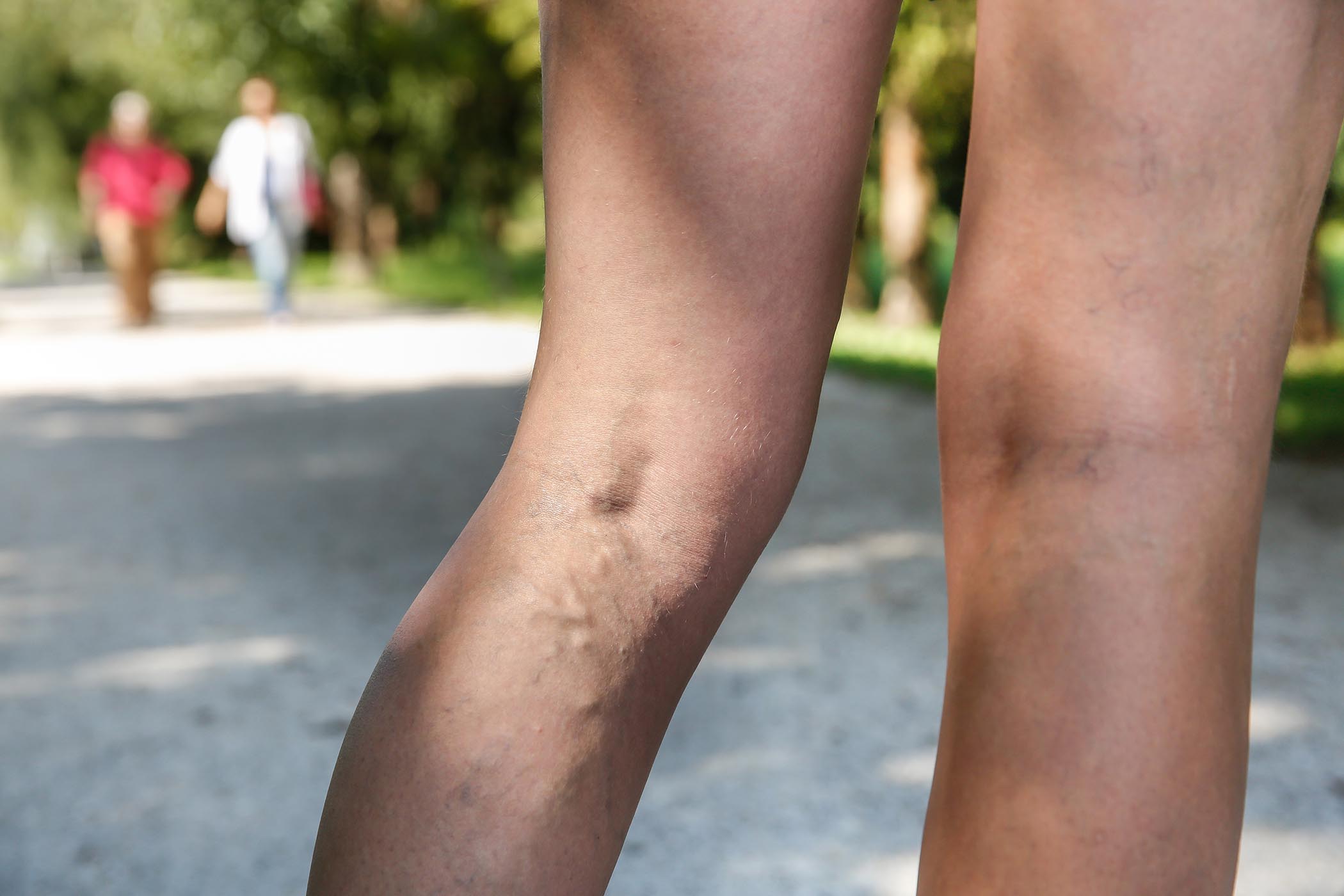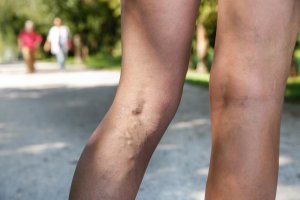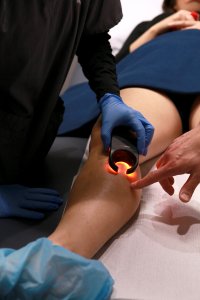News
Presenting With Varicose and Spider Veins

One of the most frequent questions we get from our patients is how we address both varicose and spider veins. In this blog, we’ll discuss how we help patients with both dilated varicosities and small caliber surface veins (spider veins).
What is the Difference Between Varicose and Spider Veins?

Varicose veins are large, swollen, and twisted blue vessels that appear in the skin. They are often associated with leg pain, swelling, itching, leg cramps, and heavy or tired legs. These symptoms can grow worse if left untreated.
Spider veins are broken capillaries which are red, blue, or purple tiny veins on the surface of the skin. Though smaller than most varicose veins, spider veins are often darker and easier to see. While many consider spider veins a cosmetic issue, they can be just as symptomatic as varicose veins.
Creating a Personalized Treatment Plan
During our initial visit, we spend a great deal of time understanding your symptoms and relevant medical history. With our initial physical exam, we also utilize objective staging criteria that classifies the level of your venous presentation.
In combination with our state of the art ultrasound imaging technology, we are able to ascertain the venous cause of the vast majority of patients that present with varicose veins. With this data, we can generate an individualized treatment plan
Treating Varicose Veins First
We understand that large caliber venous disease can play a role in recurrent swelling, dermatitis, and even venous ulceration. Advanced venous insufficiency can play a role in painful and irritating symptoms. So in cases of mixed varicosities, we treat varicose veins first.
We treat the large caliber varicosities with a combination of thermal (EVLT or RFA) or non-thermal (Venaseal or Varithena) technology to address the venous reflux sources and then subsequent refluxing branches with ultrasound guided medication injections. These steps are very important if the patient has had previous venous procedures and is now experiencing recurrence.
Treating Spider Veins
With the large caliber, symptomatic veins treated, it is easier to initiate surface vein treatment for any residual spider veins.
We do understand that vast majority of our patients have to pay “out of pocket” for spider vein treatment. Our goal is to offer a cost-effective and safe approach to help you achieve your desired treatment goal.

A cornerstone of using surface sclerotherapy is the concept of visual guidance. For our visits, our providers use either a combination of magnification or special lighting technology to help visualize the residual surface vessels. This technique also helps monitor the clinical response of the treated surface veins.
For newer sclerosant medications, there are volume limits for how much we can utilize in a surface sclerotherapy session. We do not base our treatment session cost on how much medication we use. In our experience, adherence to a conservative treatment protocol is also a strategic way of minimizing the challenges of hyperpigmentation or discoloration that can occur as side effects from sclerotherapy.
Alternative Spider Veins Treatment
Depending on response to surface sclerotherapy, we have also added vascular specific surface lasers to our treatment options. These specially designed surface lasers target the hemoglobin in the tiny thread veins that can prove challenging for some patients.
Talk to your provider about treatment options, and we will be glad to answer any questions that you may have. Our helpful front office staff can also review surface vein treatment session fees as well.
We Are Indiana Vein Specialists® – Better Options, Healthier Legs®
If you or someone you know is suffering from both varicose and spider veins, we can help! Call our office at 317-348-3020 or visit our website to schedule a consultation!
